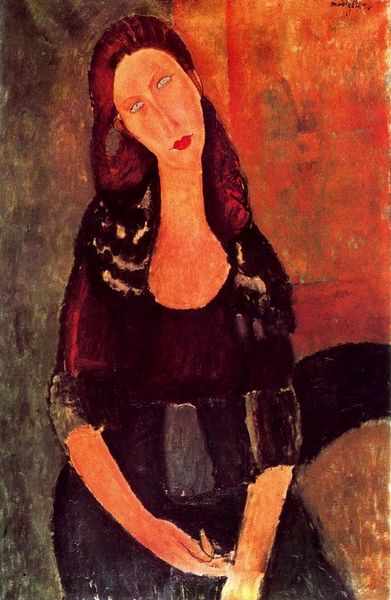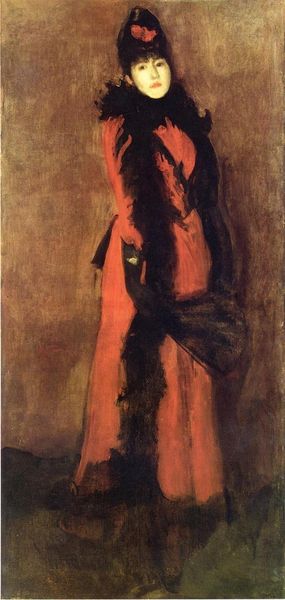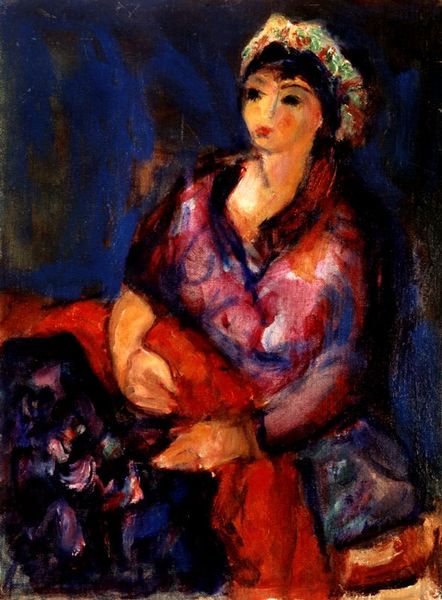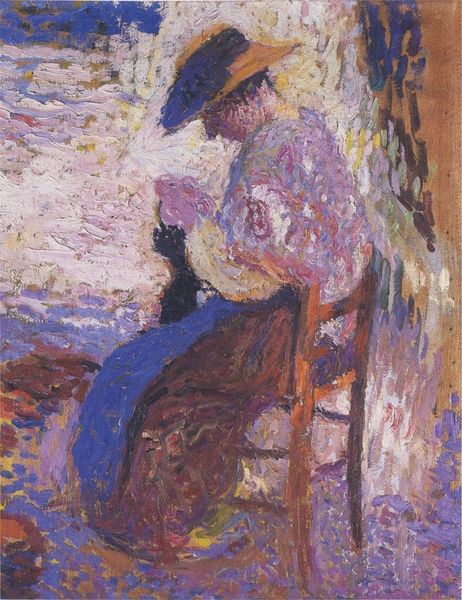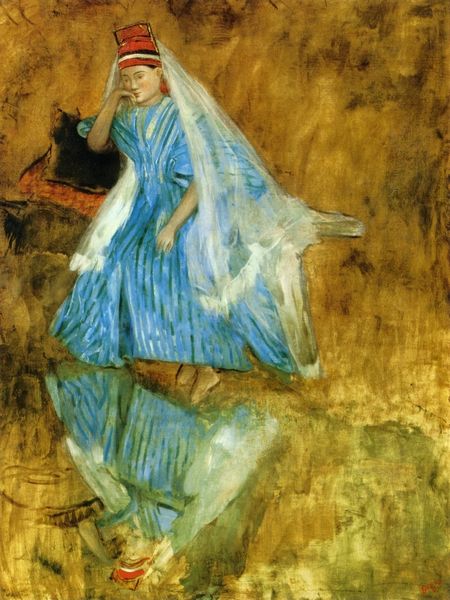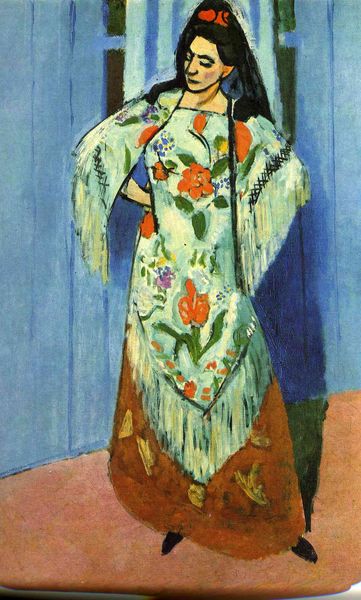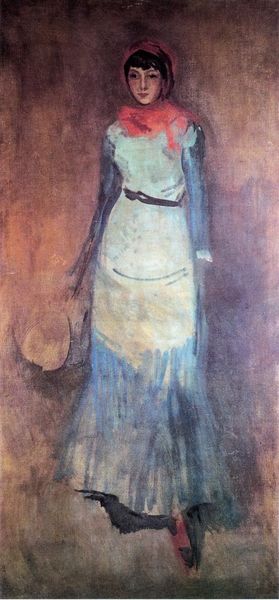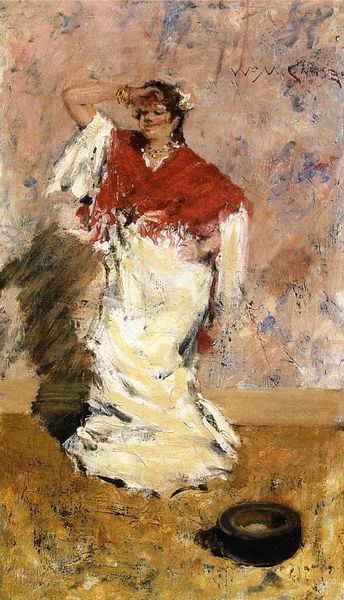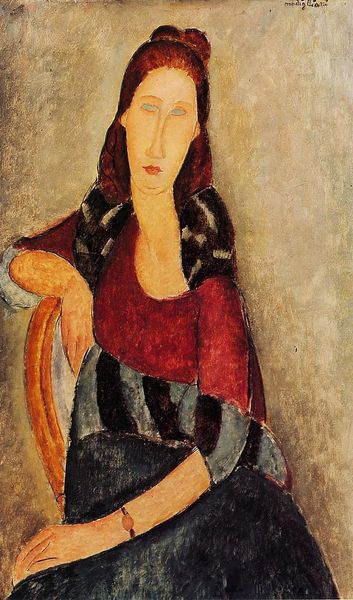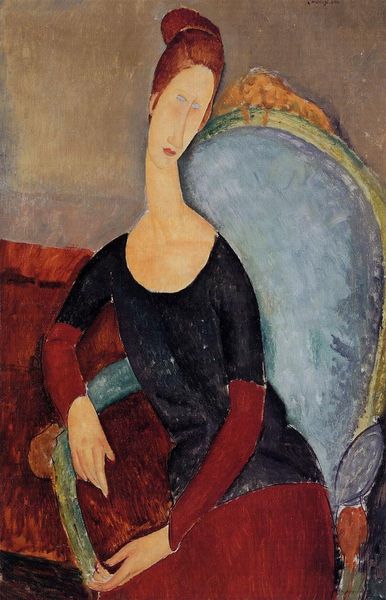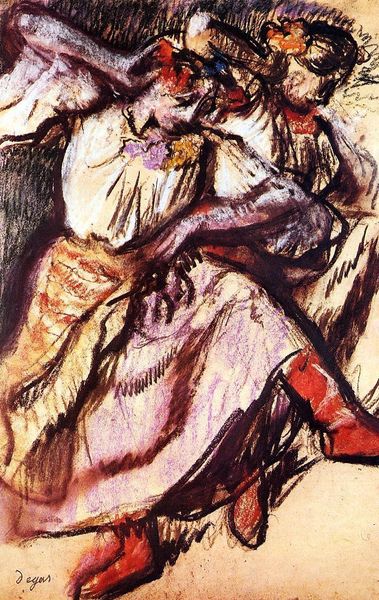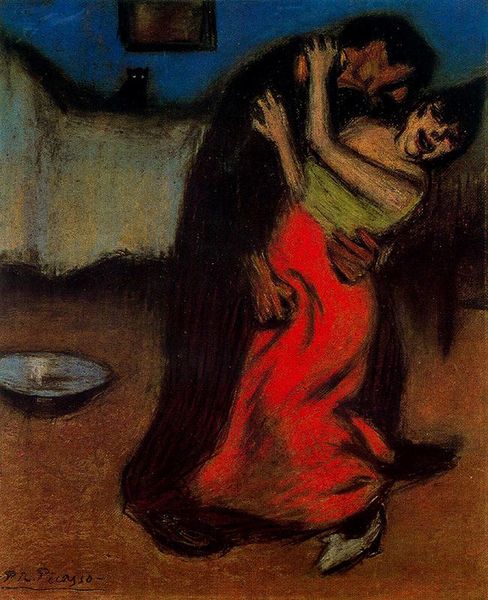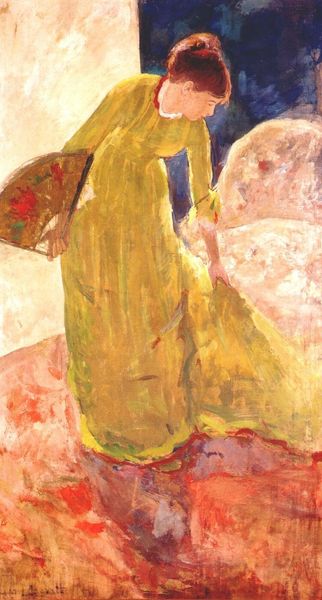
Copyright: Mordecai Ardon,Fair Use
Editor: So, here we have Mordecai Ardon's "Sarah," painted in 1947, in oil. I’m really drawn to how the red robe dominates the canvas, but then the face is just this haunting blue void. What do you see in this piece, what strikes you? Curator: The striking contrast you pointed out, the red robe against that void-like blue face, speaks volumes. Red traditionally symbolizes passion, life force, but against a faceless blue, a color often associated with spirituality and melancholy, the image creates a push and pull between earthly existence and existential questioning. What stories might these colors be trying to tell? Editor: I guess the contrast makes me feel unsettled. It feels like there is a hidden identity. Curator: Exactly. Ardon, deeply affected by the Holocaust, frequently uses color and symbolic imagery to explore themes of memory, loss, and Jewish identity. Consider that. The faceless figure becomes not just one Sarah, but an echo of countless individuals stripped of their identities, their faces lost to trauma. How might this broader context shift your understanding? Editor: That gives it such a different weight. The robe suddenly seems less about life, and more like…a shroud? Curator: Perhaps. Or perhaps, a fragile protection, the last vestige of a vibrant life struggling to persist. It highlights how objects, even colors, carry a memory that connects to our own humanity and experience. Editor: Wow, I never would have gotten there on my own. I am starting to see so much in the symbolic weight now. Curator: That’s the beauty of engaging with art, it shows how symbols interact and how they build memory that shifts our sense of identity.
Comments
No comments
Be the first to comment and join the conversation on the ultimate creative platform.
